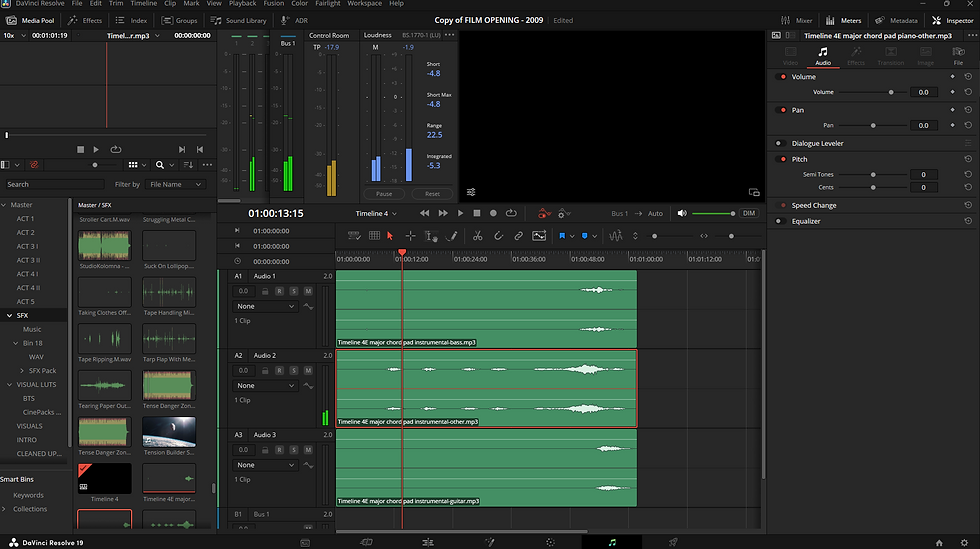Music & Licensing
- zainfaridr
- Apr 8
- 2 min read
Updated: May 11
Sound in film does not just fill the silence. It amplifies emotion, sets the tone, and often says what the characters cannot. For The Executioner, music was not a background element. It was part of the atmosphere, part of the story.
I decided early on that I did not want to rely on overused tracks or generic sound beds. Every cue needed to feel specific to this world and these characters. So I approached music the same way I approached cinematography: intentionally and with emotional precision. I wanted the music to feel born out of the story itself, quiet when it needed to be, suffocating when it had to, and constantly in sync with the emotional pulse of each scene.
I started by exploring ambient textures and synth pads on Artlist and Envato. These weren’t plug-and-play. I sampled, stretched, layered, and processed them using Audacity, reshaping them into something darker and more unsettling. The eerie pads you hear under the dialogues scene were heavily edited to hold emotional tension without being too obvious. For moments of conflict, I used faster paced instrumentals, but even those were intentionally faded out using reverb and EQ tricks to make them feel like they were dissolving into the environment instead of standing on top of it.
A large part of the process involved matching the music to character psychology. I created a custom sound bed that rises and falls with Saif’s mental state, subtle rhythmic pulses when he’s tense, low end hums when he’s processing trauma, silence when nothing else can capture the weight of the moment. None of this came pre-packaged. Every cue had to be timed, shaped, and mixed manually.

All of this was finalized inside DaVinci Resolve using the Fairlight panel, where I adjusted levels, EQ, and spatial placement to make sure the music never clashed with dialogue or ambient sounds. By placing the music wider of the dialogues which sounds weird to read but trust it makes a massive difference. It wasn’t just about “adding music," it was sound design that carried emotional weight.


Because the score was built from royalty-free elements and original compositions, there were no music licensing concerns. But more than that, it meant the sonic tone of the film stayed entirely within my control from start to finish, and that made all the difference. You'll hear more about this in the post production part of the blog now.



Comments